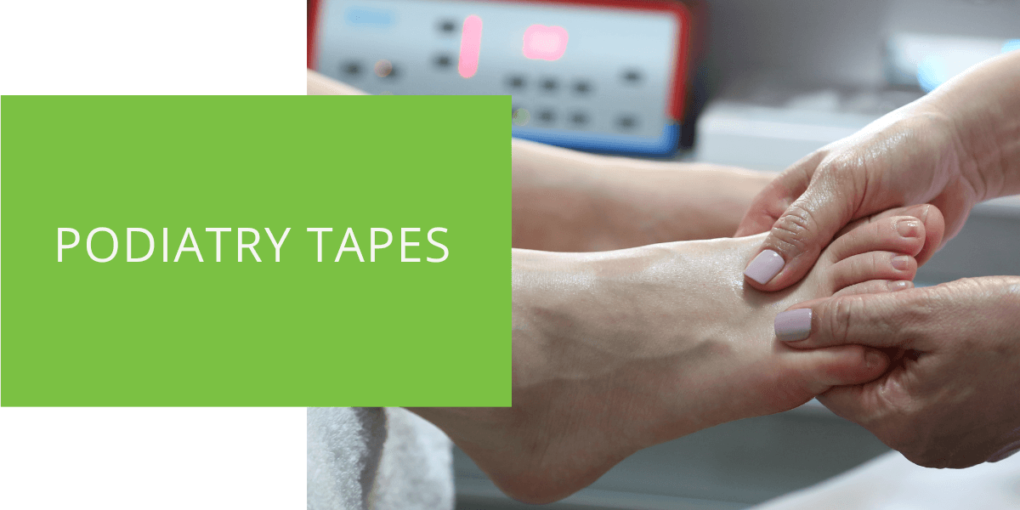Guide to Podiatry Tapes
If you suffer from foot problems, you know how debilitating they can be. Fortunately, podiatry tapes offer a simple, effective solution to help manage various foot conditions. Whether dealing with a sprain, plantar fasciitis, or any other issue, podiatry tapes can provide the necessary support and help promote healing. To get the most out of these tapes, it's important to understand the different types available and how to apply them correctly. That's where this comprehensive guide comes in. We'll cover everything you need to know about podiatry tapes, from their applications and benefits to important precautions to remember. So, if you want to take control of your foot health and improve your quality of life, read on!
Key Takeaways
- Podiatry tapes are versatile tools for foot care, offering support, protection, and relief for various foot conditions.
- Proper selection and application of podiatry tapes are essential for maximizing their benefits and minimizing the risk of complications.
- Consulting a podiatrist for guidance and advice can help individuals make informed decisions about using podiatry tapes to address their specific foot care needs.
Understanding Podiatry Tapes
What is Podiatry Tapes?
Podiatry tapes are specialized adhesive strips for foot care and wound management. They come in various materials and configurations to suit different needs, providing support, cushioning, and protection to the feet.
Types of Podiatry Tapes
- Adhesive Tapes: These tapes feature a strong adhesive backing that adheres securely to the skin, providing support and stability.
- Cushioned Tapes: Designed with additional padding, these tapes offer extra comfort and protection, making them ideal for sensitive areas or alleviating pressure points.
- Waterproof Tapes: These are moisture-resistant, making them suitable for wet environments or during activities where sweat or water exposure is expected.
- Stretch Tapes: With elastic properties, stretch tapes conform to the foot's contours, allowing for a snug and supportive fit without restricting movement.
How Podiatry Tapes Work
Podiatry tapes provide support to the foot, immobilize injured areas, and reduce friction and pressure. They can help alleviate pain, promote healing, and prevent further injury or discomfort.
Choosing the Right Podiatry Tape
Selecting the appropriate podiatry tape depends on several factors, including the specific foot condition, the level of support needed, and the patient's preferences. Here are some key considerations:
- Material: Choose a hypoallergenic and breathable tape to minimize the risk of skin irritation.
- Adhesive Strength: Consider the level of adhesive required based on the intended use and the patient's skin sensitivity.
- Waterproofing: Determine whether waterproofing is necessary, especially for patients who engage in activities involving water or sweat.
- Cushioning: For conditions such as plantar fasciitis or heel pain, opt for tapes with extra cushioning to provide relief and support.

Application Techniques
Proper application of podiatry tapes is crucial for their effectiveness. Follow these steps for optimal results:
- Prepare the Foot: Clean and dry the skin thoroughly before applying the tape to ensure proper adhesion.
- Measure and Cut: Use scissors to cut the tape to the desired length, ensuring it covers the affected area adequately.
- Apply with Even Pressure: Gently press the tape onto the skin, smoothing out any wrinkles or air bubbles to ensure a secure fit.
- Secure the Ends: To prevent the tape from loosening, secure the ends with additional adhesive or medical tape if necessary.
- Monitor for Comfort: Check for discomfort or irritation during wear and adjust the tape as needed.
Benefits of Podiatry Tapes in Wound Care
Podiatry tapes offer several benefits in wound management and foot care:
- Promoting Healing: By providing support and protection to injured areas, podiatry tapes can help facilitate the healing process.
- Preventing Infection: Tapes act as a barrier against external contaminants, reducing the risk of infection and promoting a sterile environment for wound healing.
- Enhancing Comfort: Cushioned tapes relieve pain and discomfort, allowing patients to remain mobile and active while recovering from foot injuries or surgeries.
Precautions and Considerations
While podiatry tapes can be beneficial, it's essential to take precautions to avoid potential complications:
- Allergic Reactions: Some patients may experience allergic reactions to the adhesive or materials used in podiatry tapes. Always perform a patch test before full application and discontinue use if any adverse reactions occur.
- Proper Removal: Remove tapes gently to avoid causing skin irritation or damage. Use adhesive removers or medical-grade oils to dissolve the adhesive and facilitate pain-free removal.
- Consultation with a Podiatrist: For patients with underlying medical conditions or complex foot issues, seek guidance from a qualified podiatrist to ensure the appropriate use of podiatry tapes and minimize the risk of complications.
Conclusion
Podiatry tapes are invaluable tools in foot care, offering support, protection, and relief to patients with various foot conditions. By understanding their types, applications, and benefits, individuals can make informed decisions about their use to promote healing and enhance comfort. At ePodiatrists, we prioritize patient care and strive to provide comprehensive solutions for all foot care needs. Schedule an appointment with our experts today to learn more about how podiatry tapes can help you achieve optimal foot health.
This detailed guide provides valuable insights into podiatry tapes, addressing key aspects such as selection, application, benefits, and precautions. By adhering to proper techniques and precautions, patients can harness the full potential of podiatry tapes to address their foot care needs effectively.

